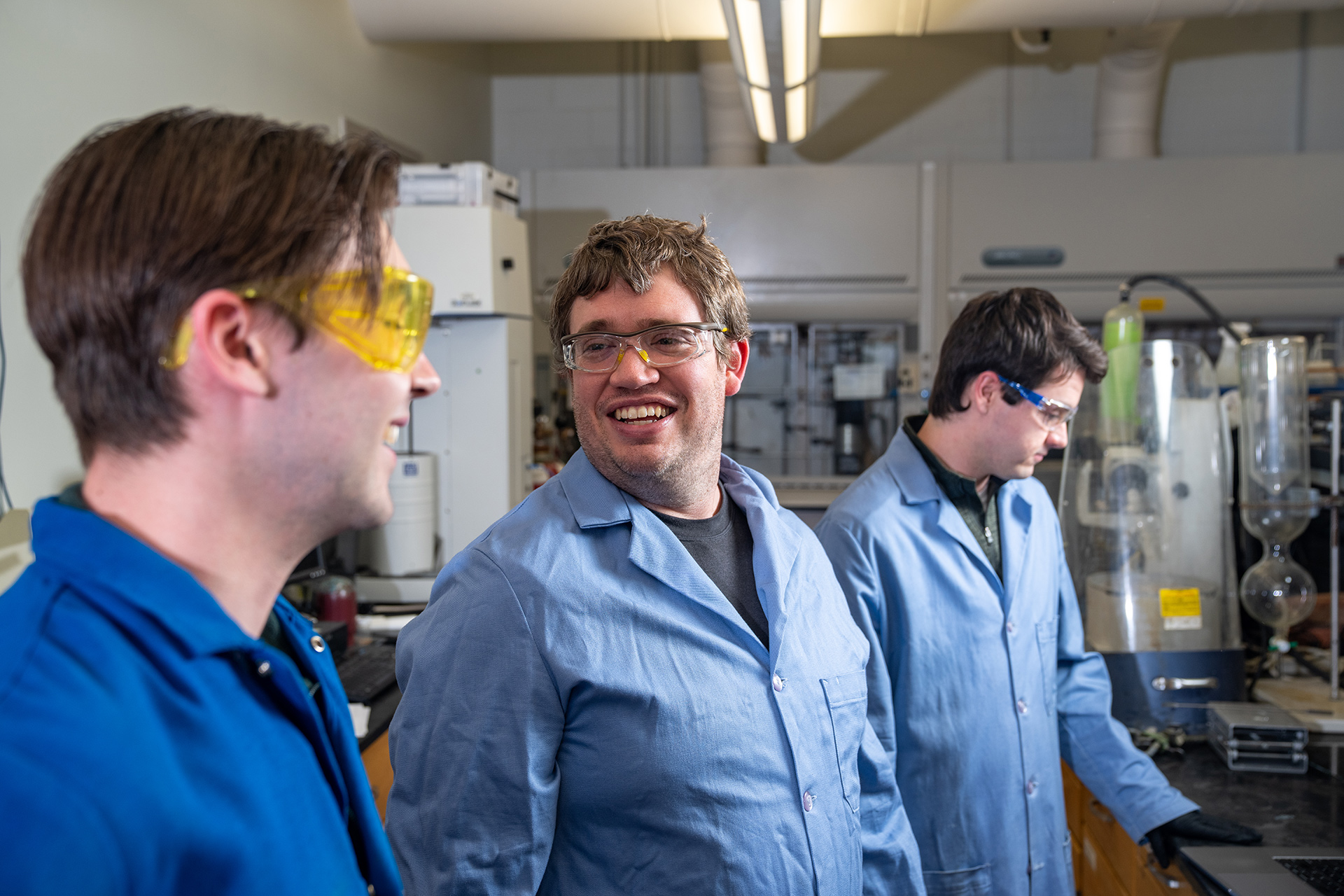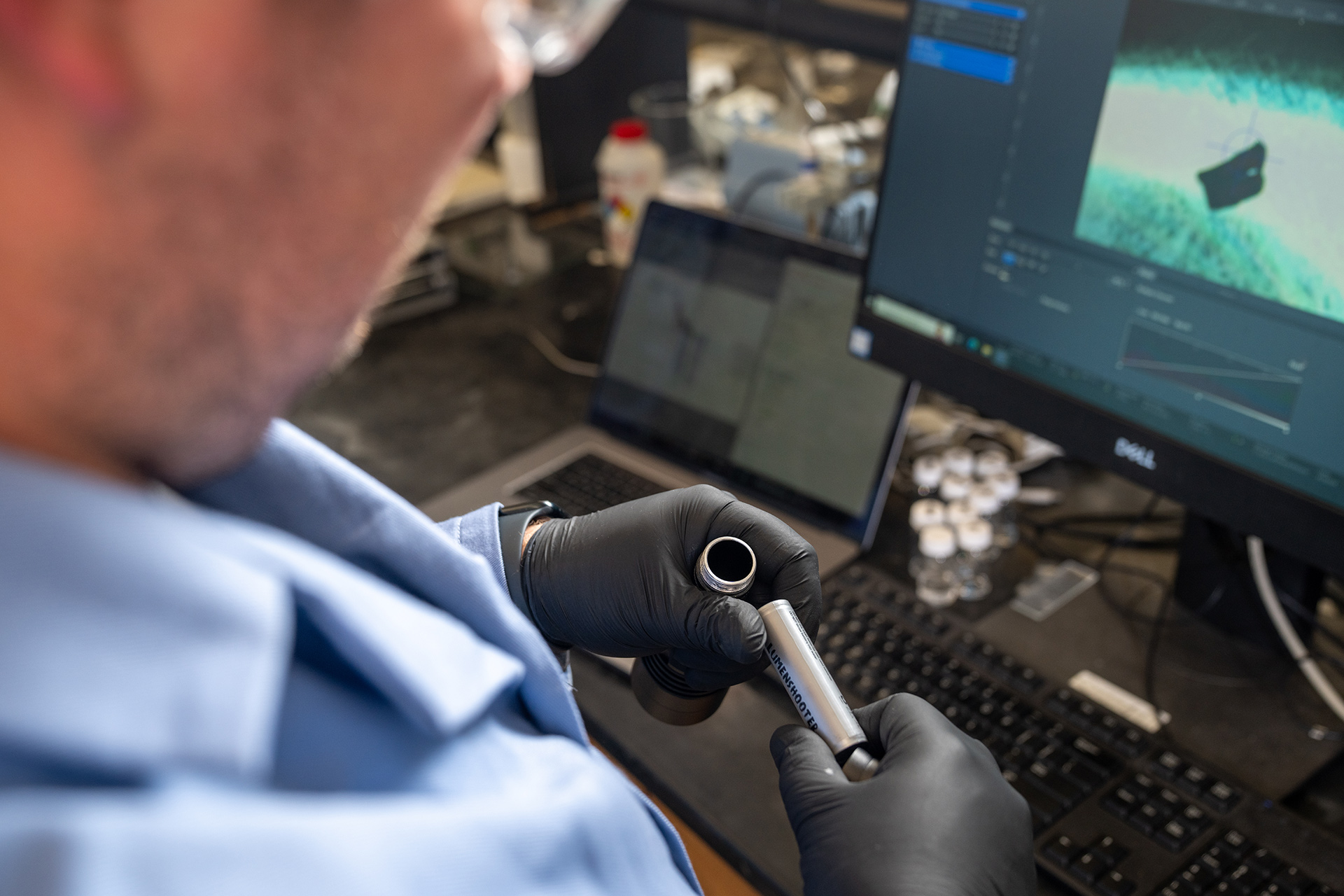
BGSU researchers lend expertise in photochemical sciences to advance innovation at NASA, Johnson & Johnson
Estimated Reading Time:
Alongside renowned photochemical scientist Dr. Joseph Furgal, students gain valuable hands-on experience with global organizations
By Branden Ferguson
As one of the world’s leading institutions for photochemical sciences research, Bowling Green State University is partnering with global organizations, including NASA and Johnson & Johnson, on industry research, underscoring the role of higher education in advancing innovation.
In the lab of Dr. Joseph Furgal, one of the world's leading researchers in materials and photochemical sciences, graduate students are working on applied research projects with NASA and Creare Inc., a research and development company specializing in the pharmaceutical, biotechnology and medical device industries, to make self-healable coolant tubings for space habitat applications. The tubing will allow for thermal fluid to continue to flow and maintain temperature instead of escaping into space when impacted.

Additionally, BGSU researchers are helping Johnson & Johnson Vision with contact lens recycling technologies, helping to combat high material costs and high levels of waste created by disposable contact lenses. Furgal and his students are also working with an international partner to improve the long-term stability of the anti-counterfeiting fluorescent pigments used in currency and document forgery prevention worldwide.
Partnerships between industry and academia are crucial in driving innovation through shared knowledge and expertise. BGSU researchers, many of whom are leaders in their fields of discipline, are frequently sought after to partner with organizations on innovative research projects.

"I am grateful that BGSU is able to partner with industry on research projects," Furgal said. "It is a mutually beneficial relationship for students to gain experience working with industry to enhance their future career prospects and for us to help solve industrial challenges that are highly visible."
BGSU doctoral student Ethan Chandler '24 is gaining valuable experience in Furgal's lab with various industries and technologies, which he is confident will positively benefit his future career prospects.
Second-year graduate student Andrew Deller '22 also values working and learning alongside Furgal, a renowned researcher in the fields of photochemical sciences and silicon-based materials.
"Working with Dr. Furgal is an incredible opportunity," said Deller. "His expertise and knowledge attract industry projects and international attention."

In recent years, the federal government has leveraged Furgal's expertise to explore the feasibility of using smart sponges to remove toxic chemicals from waterways. Continuing his research, Furgal took Chandler and Deller to Oak Ridge National Laboratory, among the world's premier research institutions, to utilize its world-class neutron scattering facility.
"Through laser light scattering, we knew our photo-responsive gels, which can swell to more than 400% of their initial volume during absorption, could be shrunk under ultraviolet light," said Furgal. "However, light and X-ray-based scattering techniques may adversely affect the material and results. Neutron scattering allows a more accurate understanding of the differences between gel phases."
The opportunity to work with neutron scattering is unique to many scientists and virtually unheard of to have the experience as a student.
"Neutron scattering is not something all graduate students get to experience," said Furgal. "I didn't get experience with neutron scattering until I was a professor. I'm thankful that my students were able to gain hands-on experience while still in school."
Excited by the unique opportunity to work with neutron scattering, the graduate students said they are grateful for the exposure to and hands-on experience with cutting-edge technology.
"I never would have thought I would have the chance to work with this type of advanced technology during my doctoral program," said Chandler.
"It was a once-in-a-lifetime opportunity, and it's an experience that I will take with me into my future career," Deller said.

Data from the neutron scattering is currently being analyzed, which will enable Furgal and his team to more accurately design the smart sponges to swell and absorb toxic contaminants.
"I am gaining hands-on experience in research no one else has ever done," said Chandler. "I'm not giving my samples to a technician and waiting for results. I am using machines, collecting the data, analyzing the findings and publishing our findings."
"It's about more than getting an output," added Deller. "It's important and beneficial to know how the machines work and why we're getting the results we are. My hands-on learning is all-encompassing."
Related Stories
Media Contact | Michael Bratton | mbratto@bgsu.edu | 419-372-6349
Updated: 06/13/2025 02:06PM




